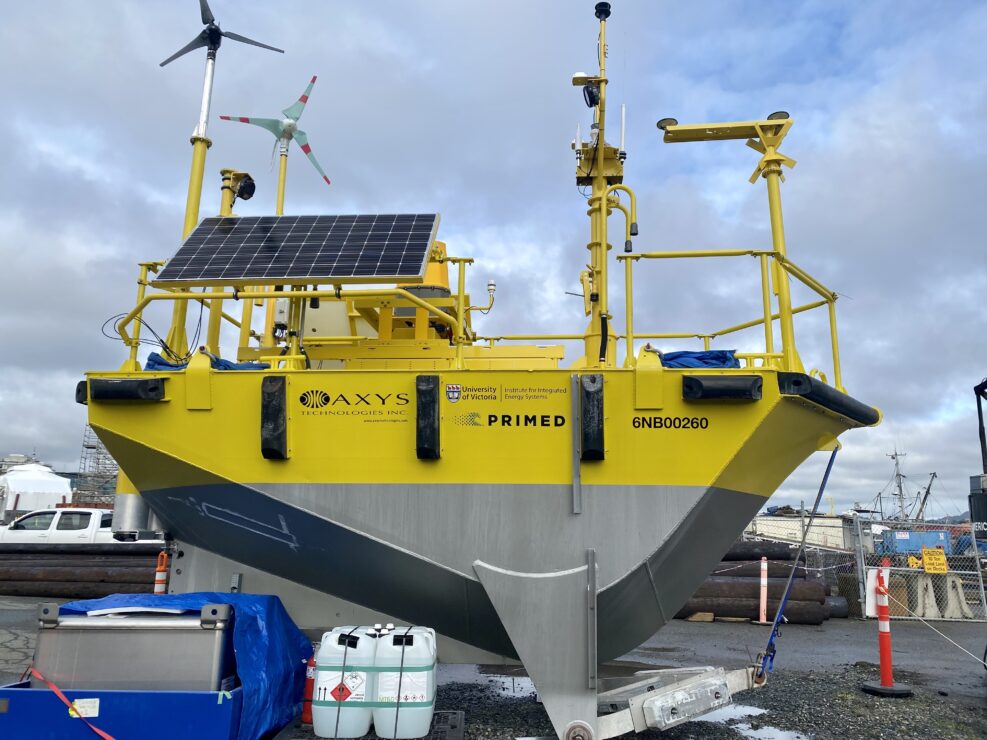UVic’s PRIMED designed buoy will be deployed by the end of the month

UVic researchers are preparing to launch a buoy into the ocean with the hope of informing coastal communities about renewable energy options. The impressive nine metre tall yellow buoy has wind turbines and solar panels that power it, as well as the laser sensor equipment aboard the buoy.
“This is a very large piece of equipment, so every little piece needs to be perfect,” mentioned research scientist Chloe Immonen, who joined the project in 2019.
The Pacific Regional Institute for Marine Energy Discovery (PRIMED) research lab has been researching marine renewable energies for over 20 years. Led by Curran Crawford and Brad Buckham at UVic, the lab designed a wind buoy to collect data, and with it, explore the potential of offshore wind power.
Essential data on offshore wind patterns will be gathered by the buoy. The ultimate goal of this project is to benefit small off-grid communities by helping them switch to wind power.
The buoy was built by AXYS Technologies according to PRIMED’s planning and uses Light Detection and Ranging sensors (LiDAR). These sensors allow the buoy to measure wind speeds and directions from up to 200 metres above the water’s surface. Even though the buoy itself is just nine metres, these sensors allow it to track wind patterns at the height of a wind turbine. This will help to determine the best locations for wind turbine projects. Another sensor will be on the roof of an existing building.
“I’m excited that remote communities might have the potential to get off of diesel generation, and on to renewable energy,” said Immonen.
The 5500-kilogram wind buoy will be deployed and anchored in the waters of Trial Island near Oak Bay by the end of the month. In order to get there, the wind buoy will be transported on a barge led by a tugboat. With the help of Salish Sea Industrial Services, this transport stage is expected to take three hours.
After the buoy has been stationed and anchored on Trail Island, It will transmit the data gathered over cellular networks to the Canadian Integrated Ocean Observing System, an open data software platform, for six months. Depending on weather conditions, Crawford says the deployment is expected to happen this month.
After at least six months of gathering data, Crawford hopes the project can begin to help remote communities make the switch to renewable energy.








